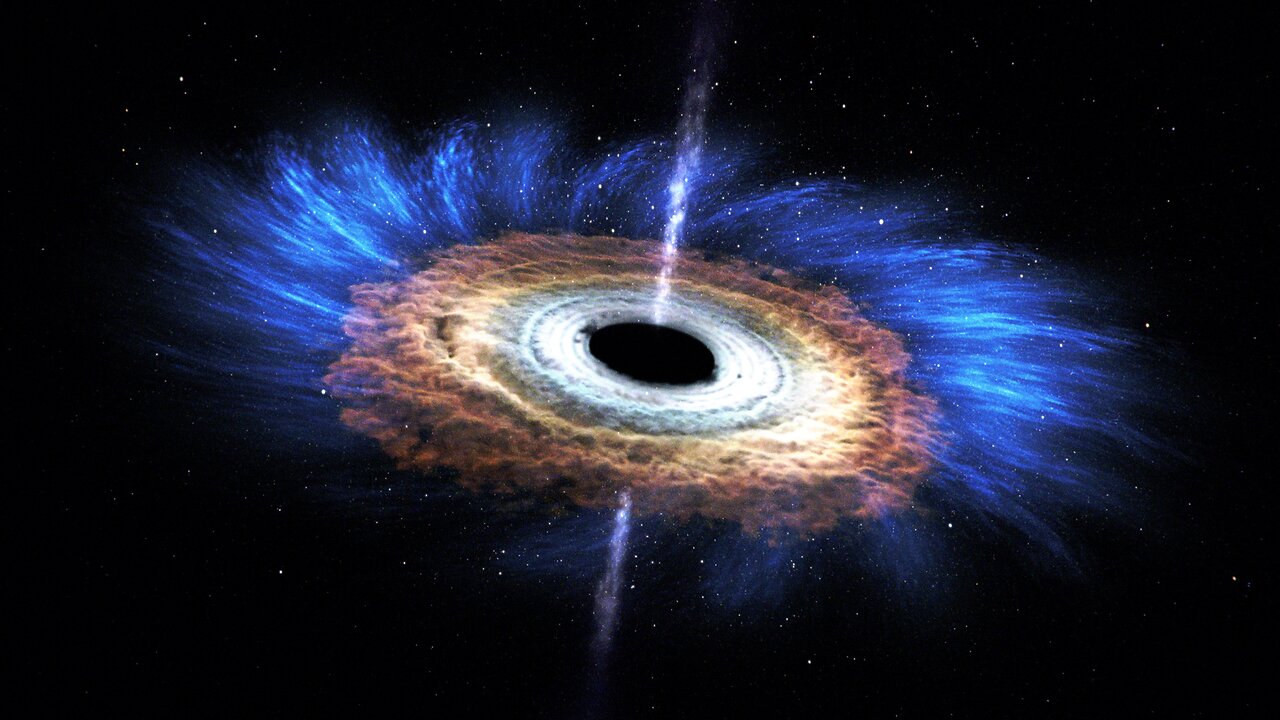Premium Only Content

Cosmic Drama Unveiled: When Black Holes Shred Stars
In this visual representation, we explore a remarkable cosmic phenomenon: when a star ventures too close to a black hole, the gravitational forces at play are so powerful that they tear the star apart. This extraordinary event, known as a "tidal disruption," unfolds in a dramatic manner. As the star gets too close to the black hole, it undergoes a process where some of its shattered remains are catapulted outward at incredibly high speeds, while the rest gets inexorably drawn towards the insatiable gravitational pull of the black hole. This dynamic interaction results in a unique X-ray flare that can persist for several years.
To unravel the mysteries surrounding such events, NASA's Chandra X-ray Observatory, the Swift Gamma-ray Burst Explorer, and ESA/NASA's XMM-Newton spacecraft have come together, each contributing essential pieces to the cosmic puzzle. Their combined efforts shed light on a particular tidal disruption event called ASASSN-14li. This event was initially discovered through an optical survey conducted by the All-Sky Automated Survey for Supernovae (ASAS-SN) back in November 2014. ASASSN-14li unfolded in the vicinity of a supermassive black hole, which is estimated to possess a mass several million times greater than that of our Sun. This cosmic drama played out within the heart of PGC 043234, a distant galaxy located approximately 290 million light-years away.
Astronomers are eagerly searching for more occurrences akin to ASASSN-14li. These events serve as critical testing grounds for theoretical models, allowing scientists to gain deeper insights into how black holes influence their surrounding environments.
During the course of a tidal disruption event, slender strands containing a significant portion of the star's mass plunge toward the black hole. Over time, these gaseous strands converge into a seamless, scorching-hot disk that radiates with intense X-rays. As this disk takes shape, its central region becomes extraordinarily heated, leading to the emergence of a powerful outflow of material known as a "wind," which streams away from the disk.
Credits
NASA's Goddard Space Flight Center.
Brian Monroe (USRA): Lead Animator
Scott Wiessinger (USRA): Lead Producer
Francis Reddy (Syneren Technologies): Lead Writer
Jon Miller (University of Michigan): Lead Scientist
-
 27:41
27:41
DeVory Darkins
1 day agoMarjorie Taylor Greene STUNNED after Trump pulls her endorsement
22.2K233 -
 32:41
32:41
Tactical Advisor
3 hours agoNew Red Glock? | Vault Room Live Stream 045
36.4K5 -
 LIVE
LIVE
Major League Fishing
3 days agoLIVE! - Fishing Clash Team Series: Summit Cup - Day 1
773 watching -
 4:38
4:38
Talk Nerdy Sports - The Ultimate Sports Betting Podcast
5 hours agoNFL SUNDAY — Top 10 Locks You NEED to See (Nov 17)
25.1K -
 18:03
18:03
Nikko Ortiz
3 hours agoNikko Ortiz Night Routine...
13.8K6 -
 21:37
21:37
Forrest Galante
16 hours ago6 Deadly Sea Monsters That Actually Exist
117K8 -
 LIVE
LIVE
JdaDelete
4 hours ago $1.37 earnedElden Ring | First Playthrough Episode 10
189 watching -
 8:10
8:10
MattMorseTV
1 day ago $65.93 earnedDemocrats caught COLLUDING with Epstein.
84.6K133 -
 2:05:50
2:05:50
Pepkilla
4 hours agoBreakfast First ~ Camo Grind Call Of Duty Black Ops 7
15K1 -
 LIVE
LIVE
DannyStreams
7 hours ago🟢 Live: Coffee & Tasking | 100 follower Grind
53 watching